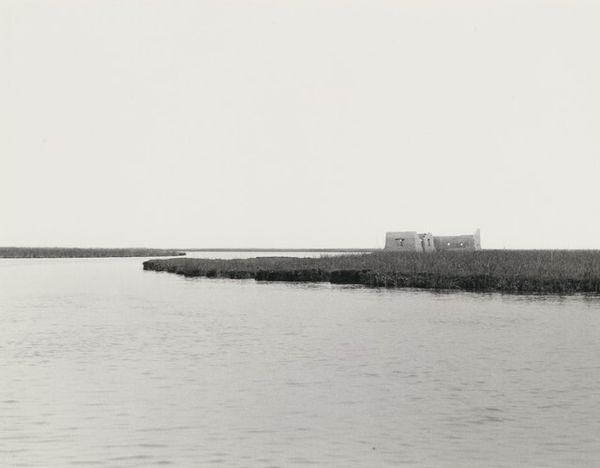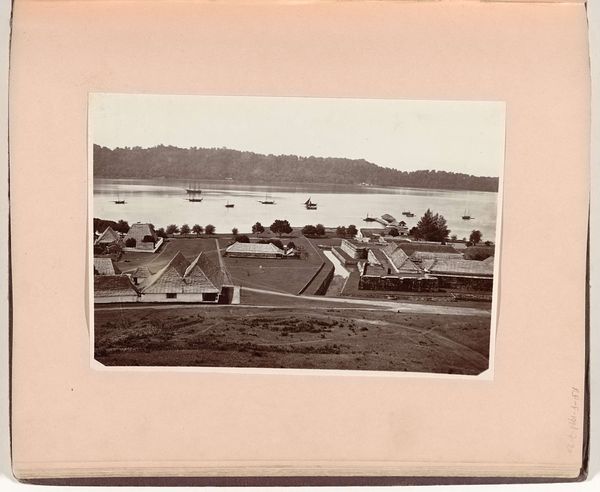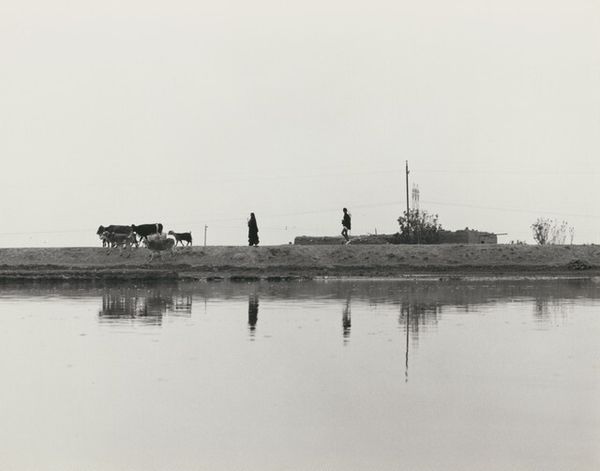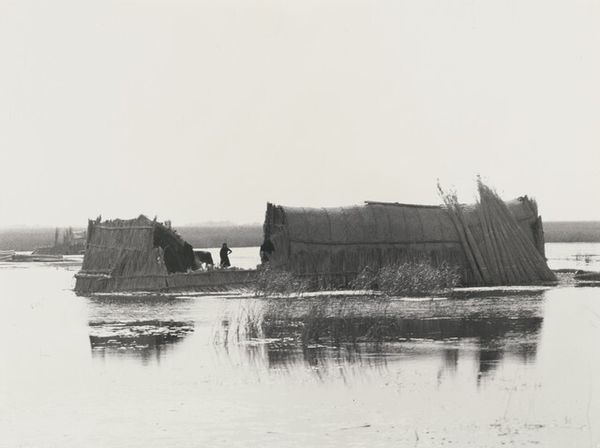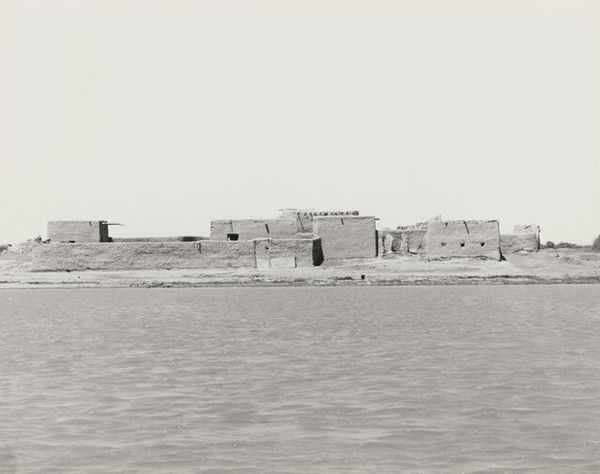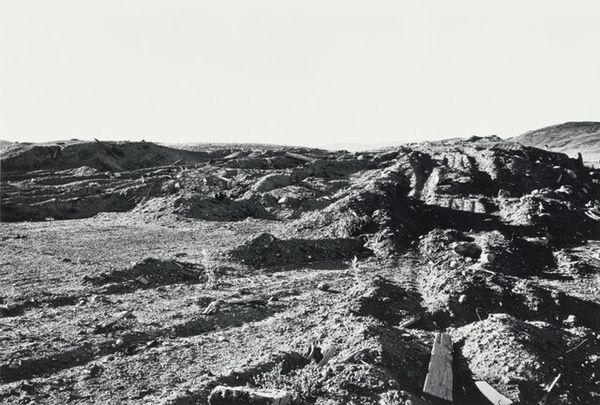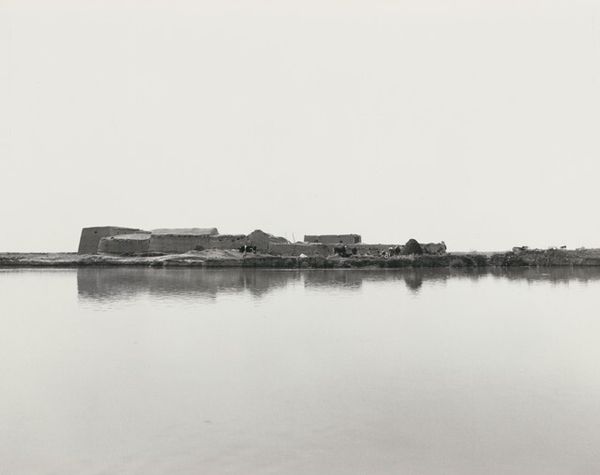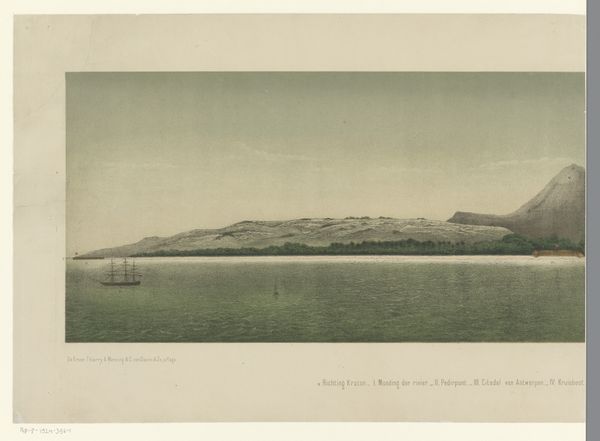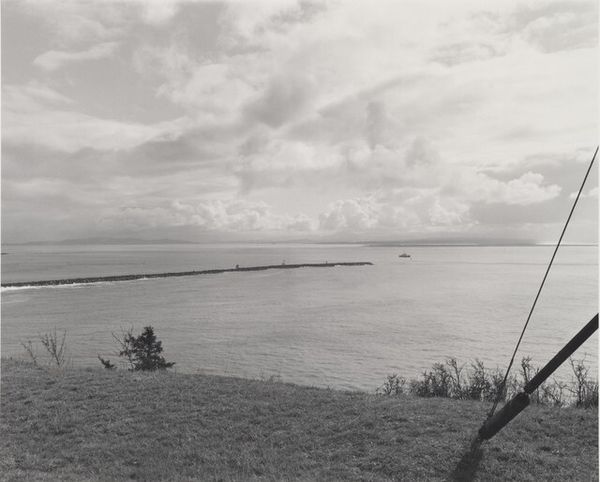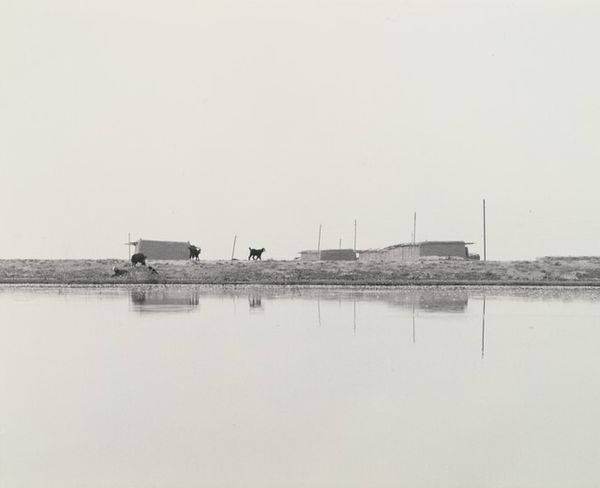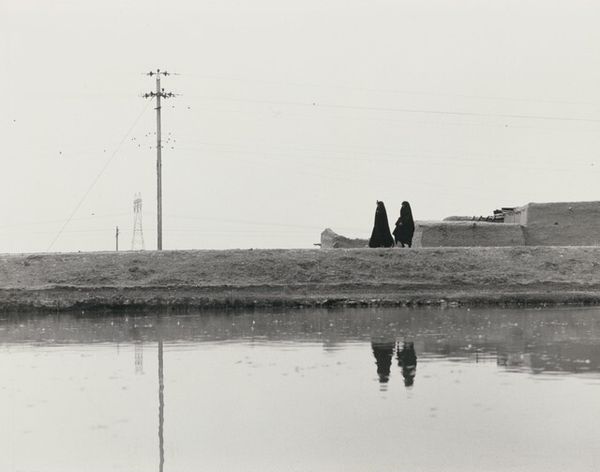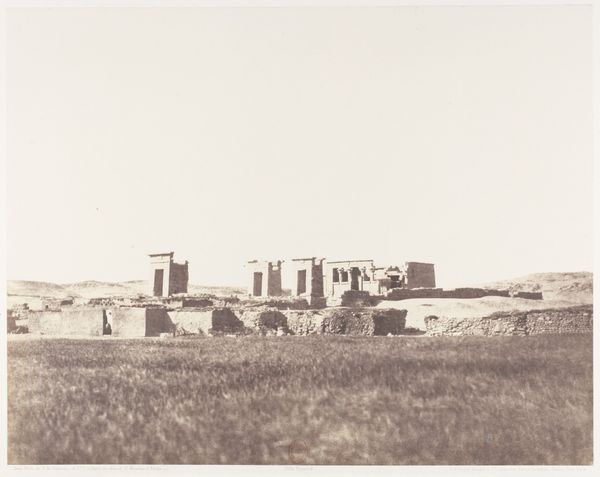
found-object, sculpture, site-specific
#
conceptual-art
#
minimalism
#
landscape
#
found-object
#
land-art
#
environmental-art
#
geometric
#
sculpture
#
site-specific
Copyright: Michael Heizer,Fair Use
Editor: So, here we have Michael Heizer’s "Adjacent, Against, Upon" from 1976, made of concrete and found stones. It's fascinating how these massive geometric forms are set against this very natural setting. I’m struck by the sort of quiet tension the piece creates; it feels monumental and temporary at the same time. What symbols do you see at play in this sculpture? Curator: Well, first consider the materials. Concrete, a distinctly human-made substance, and then these found stones, timeless, and shaped by nature itself. The interplay suggests a very deliberate dialogue about humanity's imprint upon the land, and land's indifferent accommodation of humanity. It evokes our transient existence against the grand backdrop of geological time. Note the very specific prepositions of the title, which further reinforce a visual representation of precarious balance, the imposition of will, and even subjugation. Is there any aspect that evokes a primitive structure or altar? Editor: Yes, especially how some stones are *upon* concrete bases… that positioning implies a reverence, or maybe a dominance? How would you say that Heizer is trying to express the human condition? Curator: Perhaps Heizer prompts us to confront our perceived dominion over nature. Consider how frequently we try to impose order - symbolized here through the concrete forms. And how we invariably meet the raw, untamed presence of earth itself. The stones dwarf those would-be rational structures and offer that ancient continuity...a suggestion of our inevitable return to that original, unshaped state. What thoughts surface when you consider this idea of geometric forms versus free-form rocks? Editor: I suppose the "adjacent," "against," and "upon" are conditions, and Heizer leaves the interpretation to the viewer as a sort of completion of his work, right? Curator: Exactly! The beauty of Land Art resides in how it intertwines landscape and viewer. You activate meaning simply by observing and considering the artist's statement within the broader landscape. Editor: I see that so much more clearly now. It's like the landscape itself becomes part of the artwork’s vocabulary. Thanks so much for lending me your insight. Curator: My pleasure. And in return, you led us back to what it all amounts to in the end: our relationship to the Earth, in its beautiful, eternal indifference.
Comments
No comments
Be the first to comment and join the conversation on the ultimate creative platform.
